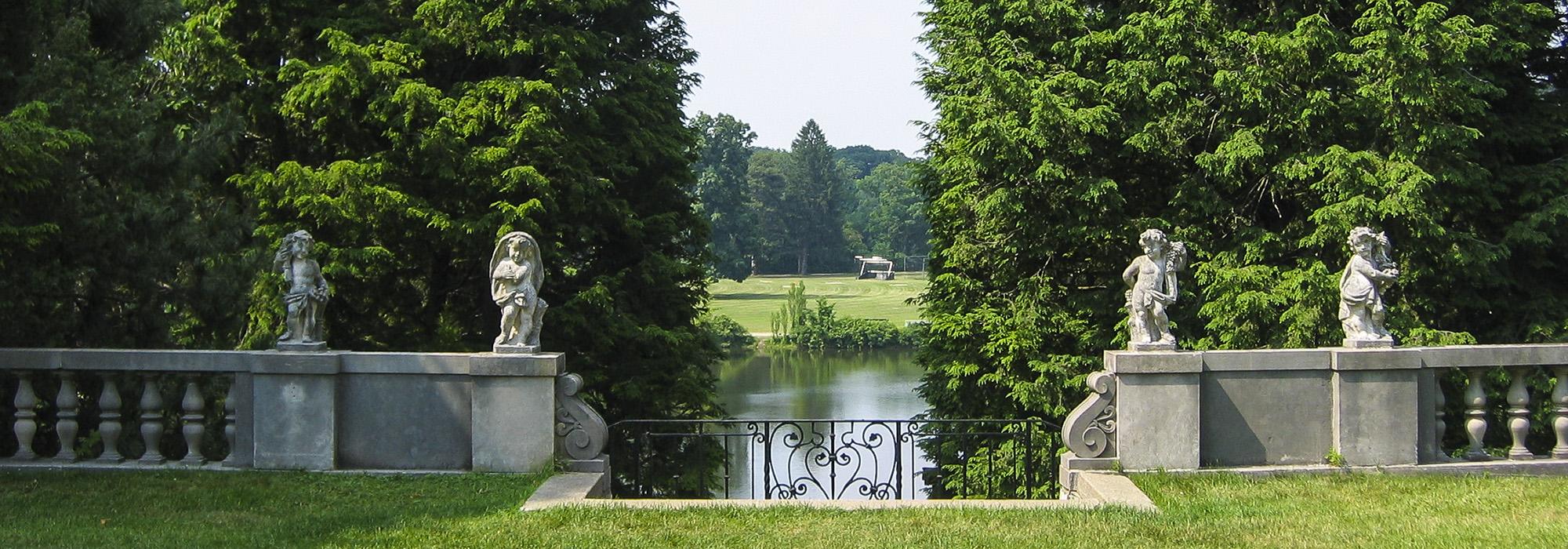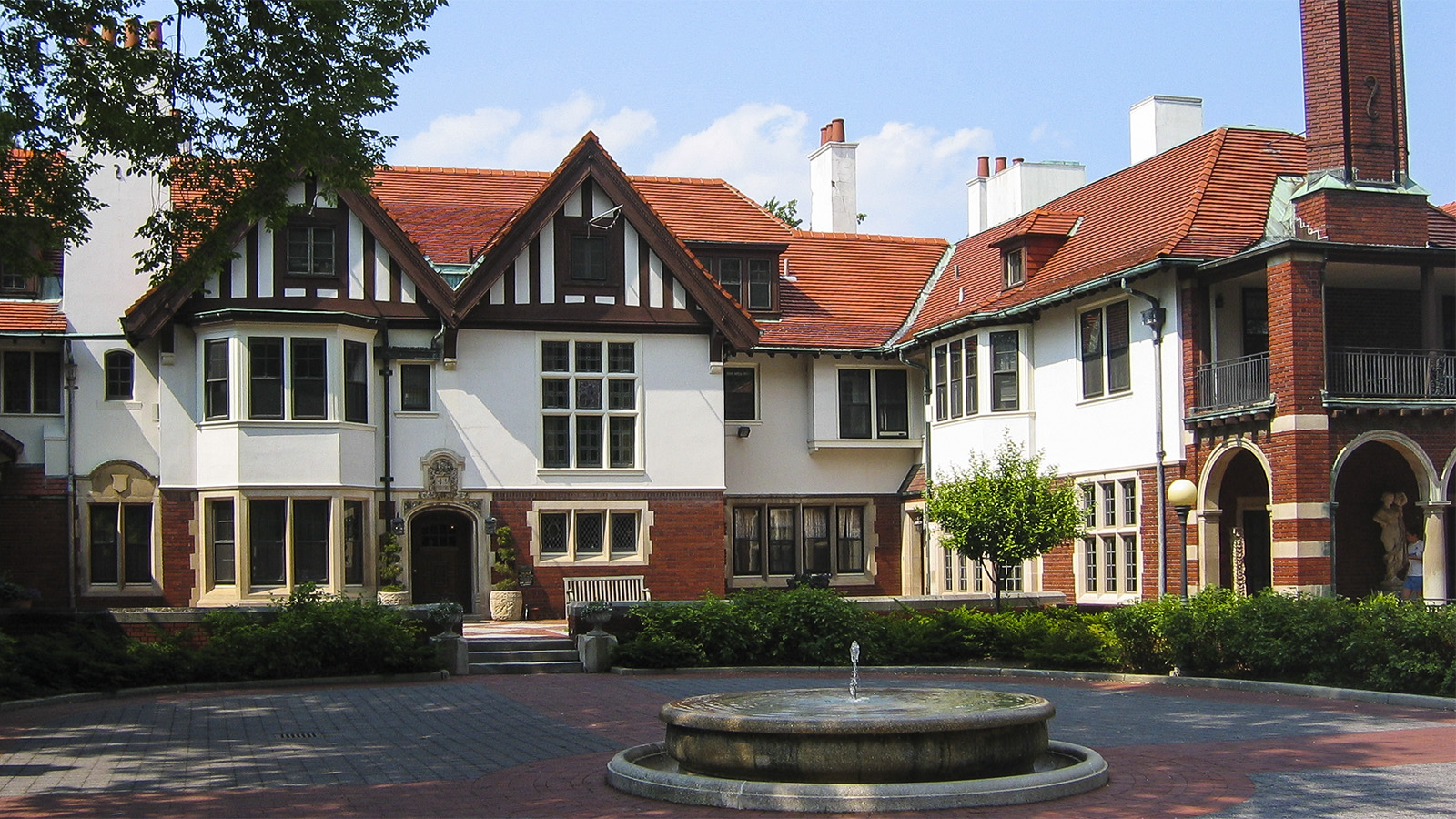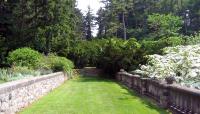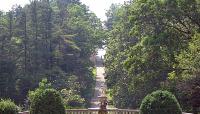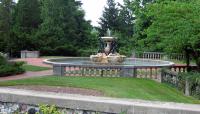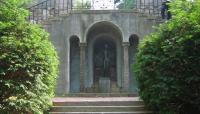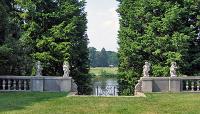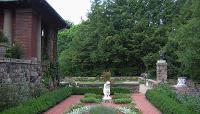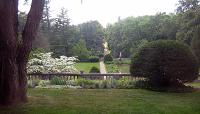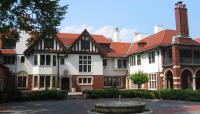Landscape Information
In 1904, newspaper magnate George Booth purchased a 174-acre farmstead 20 miles northwest of Detroit, which he named Cranbrook after his ancestral English home. Working with landscape gardener H. J. Corfield, Booth continued to acquire land and supervised workers as they graded roads and hills, seeded lawns, and created Glastonbury Lake (now Kingswood Lake) fed by constructed cascades drawing from natural springs. Beginning in 1909, Booth consulted landscape architect O. C. Simonds, who recommended a naturalistic approach to reforesting the barren, undulating terrain. The edges of the lake were planted with native shrubs, trees, and herbaceous plants, while groves of pines, red cedars, hazelnuts, and dogwoods lined the roads.
The English Tudor-style house, designed by Albert Kahn and completed in 1908, is surrounded by 40 acres of gardens, mostly created between 1915 and 1922. George Booth was directly involved with the planning and design of the grounds, including Italianate terraced lawns enclosed by stone balustrades, a fountain modeled on Rome’s Fountain of the Tortugas, a boathouse on the lake, and a long reflecting pool and fountain. The grounds also incorporate an Arts and Crafts herb garden; a walled sunken garden, a bog garden, a chain of small Grotto Lakes, and an Oriental garden. Booth hired Albert Charpaize to create rustic bridges and summer houses and worked with Marcus Burrowes on the Greek Theatre and Rainbow Spring fountain. The Cranbrook House and Gardens are now the administrative center of the Cranbrook Educational Community, which was designated a National Historic Landmark in 1989.



